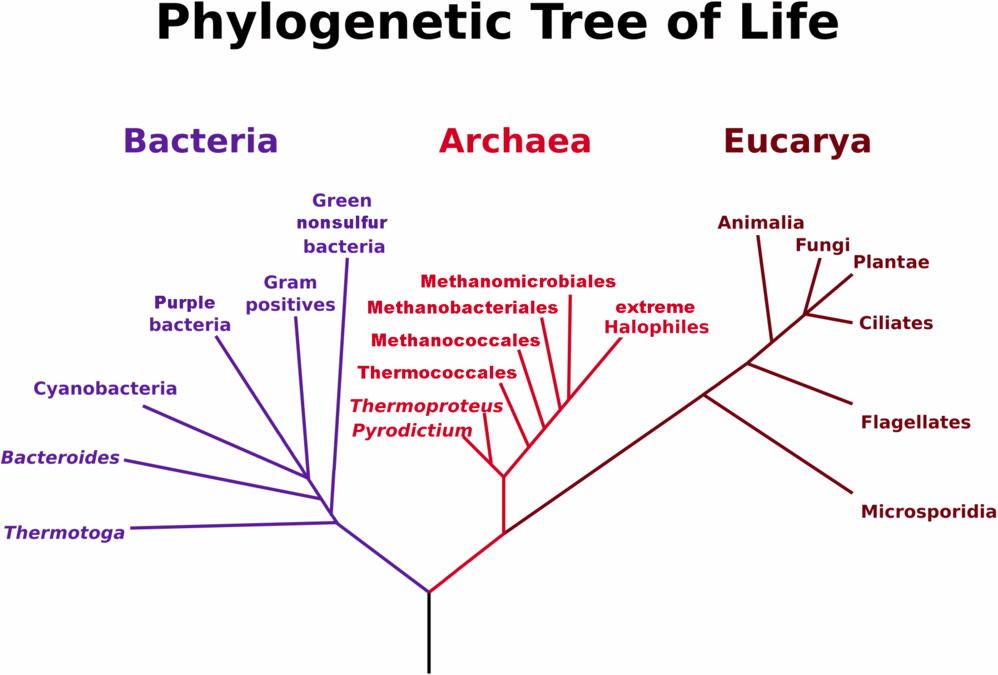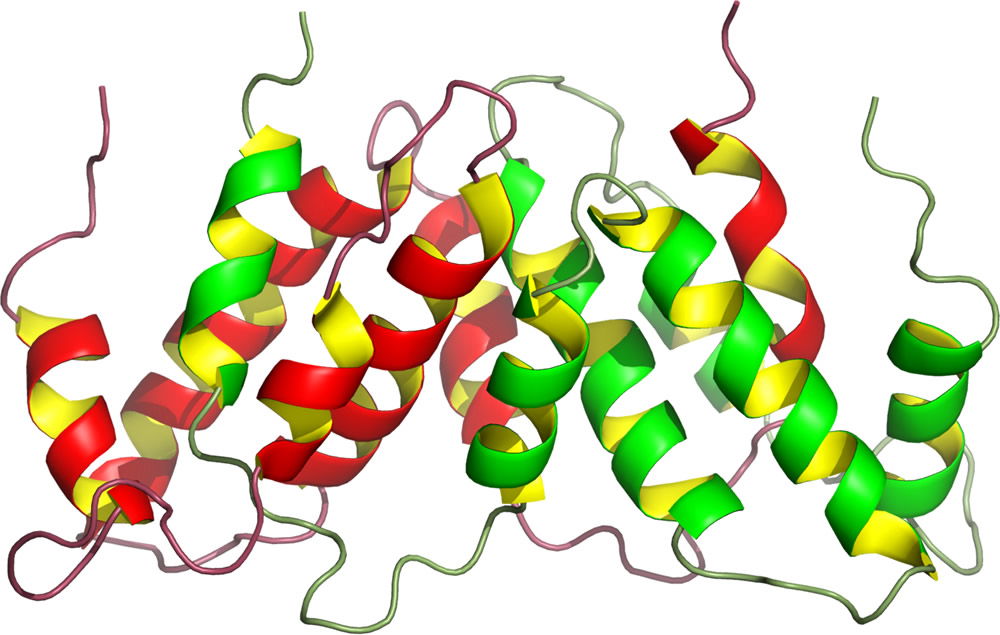
The Beneficial Functions of Endogenous Retroviruses
Abstract
The List of Beneficial Functions for Endogenous Retroviruses (ERVs) Continues to Grow: ERVs also Promote Healthy Immune Responses—Another Creationist Confirmation1
All viruses are amazing creations by God. They are molecular machines.2 If we couldn’t trust God’s Word from the first verse and if we believed He used evolution to create, we could only conclude that God designed viruses to kill us all the day long. He wouldn’t be the Creator God of the universe that declared everything “very good” anymore because today’s viruses are very bad. From observing very bad viruses without the clear teaching of Scripture regarding sin and its ushering in of disease and death, we could only conclude that any god or gods are only remotely part of our existence (if at all). God would be reduced to a cosmic killjoy responsible for very bad viruses and doing nothing about them. However, we have Scripture and know that it is without error, so we know that this world contains very bad things because of man’s sin (not because of God). Just because this world has very bad things in it doesn’t mean that God didn’t originally create everything perfect and call it “very good” (cf. Genesis 1:31). The existence of very bad things like viruses should simply remind us that we live in a fallen world.
Introductory Virology Without An Origin
Textbook Definition
Modern textbooks define viruses as obligate intracellular parasites—they have an obligation (i.e., need) to be inside a cell and hijack normal cellular functions to make more viruses, killing the cell.3 The exact details of what a virus does are irreducibly complex.4 Irreducible complexity is something that ceases to effectively function when one part of the whole is removed. Since viruses require every part, they meet the definition of being irreducibly complex. As a result of their irreducible complexity, viruses are said to travel light because they carry only what is needed without the extra baggage of what the host cell provides. All viruses are made of genetic material (DNA or RNA) and a protein coat. Their size is also particularly relevant since they were originally defined as infectious filtrate capable of causing disease in tobacco plants. Viruses range in size from a few nanometers (nm) to several micrometers across. To give you a better idea of just how small a virus is, our red blood cells are 10,000 nm across and a simple bacteria like E. coli is 1,000 nm by 3,000 nm in size. As a result, viruses cannot be seen using traditional microscopy and require sophisticated electron microscopes.
Host Range and Genetic Makeup
The variation of viruses is astounding. Viruses infect every form of life, including humans, insects, plants, and even bacteria. The previously mentioned virus genetic information targets its host(s) and is used as a modern classification scheme. Viruses causing cold sores are called DNA viruses. The flu is an RNA virus. There are even viruses that carry RNA and turn the RNA into DNA once inside the cell. HIV belongs to a special family of viruses called retroviruses because of how they make the RNA to DNA switch.
Retroviruses (e.g., HIV) often exist outside cells to move between hosts. Other retroviruses move between hosts embedded in the host’s DNA. These retroviruses are transmitted through the host genome and are, therefore, called endogenous retroviruses (ERVs). ERVs make up approximately 5–10% of all mammalian genomes (including that of humans).5

Phylogenetic Tree of Life. Image by Maulucioni, via Wikimedia Commons.
Origins of Viruses
Considering the diversity of viruses, evolutionists have been severely challenged to explain their origin. The traditional tree of life now shows three domains: eubacteria, archaea, and eukarya. Typical evolutionary trees in textbooks show the three domains of life but often overlook viruses. Viruses are often overlooked because secular scientists debate whether viruses are alive by definition.6 Let’s exclude viruses from the typical evolutionary trees for now. Standard microbiology textbook chapters about viruses have simpler representations of the three domains of life with one addition: a line extending from the three domains called viruses. In making these evolutionary trees, textbooks communicate that there is no explanation for virus origins. The virus basic definition is a Catch-22: viruses need cells, but viruses kill cells. When I was studying molecular virology at the graduate level, I asked my professor about virus origins, and he said, “We don’t know.”

Arshan Nasir and Gustavo Caetano-Anollés. “A Phylogenomic Data-driven Exploration of Viral Origins and Evolution,” Science Advances 1, no. 8 (September 2015): 1–24, http://advances.sciencemag.org/content/1/8/e1500527.full.
In this figure, pay attention to the pink areas located on these schematics to represent viruses. For a standard tree of life from an evolutionary perspective, all of the living things are supposed to share a common ancestor marked by a singular dot. Notice how the singular dot in the bottom panel (B) has all the pink on one end, indicating that the viruses are altogether separate from all other living things in terms of common ancestry.
A recent paper tried to address this evolutionary enigma in the journal Science.7 These authors empirically analyzed various DNA sequences (i.e., testable and repeatable) but actually reported historical science (i.e., extrapolation of current rates and processes back into the past).8 No actual experiment lasted millions of years; they interpreted their empirical data to fit their presuppositions about our origins.
The Virus Inside Us
This paper is worth mentioning because the authors’ empirical science was great. They unlocked another key to viral functions, which may also provide insight into their original created role. The main problem with this secular scientific paper study and those popularizing it is that they mistake historical science for empirical science and vice versa. Nevertheless, these secular scientists found another very good function of ERVs in mammals.

Structure of interferon gamma. Image from LeCornichon, via Wikimedia Commons.
These scientists were studying a molecule important in fighting viruses. The name of the compound they tested is called interferon. Interferon is a protein secreted as a signal from virus-infected cells to alert their neighboring cells of the impending viral threat. What was initially interesting for the authors (and myself) was that three distinct types of human cells (K562 myeloid-derived cells, HeLa epithelial-derived cells, and primary CD14+ macrophages) all responded to interferon similarly by switching on genes contained within ERVs. So the compound responsible for sounding the alarm is the same compound that switches on ERVs. The particular relevance to this study is that viral genes are switched on to fight invading viruses. Furthermore, these ERV proteins targeted genes to coordinate the innate immune response. A particularly intriguing aspect is that these ERV proteins targeted the innate immune response because this part of our immune system specifically fights (among other things) viral infections. It is also worth noting that the innate immune system is the part of our immune system that is functioning from the moment we are born (the other portion of our immune system continues developing and learning over the first year of our lives). Because we are protected from viral infections while we are inside our mother’s womb and susceptible once we’re born, it is amazingly designed so that when we’re born we have a system in place that fights viral infections. But this design feature was found not only in human cells but also in all mammals they tested. The regulation of innate immunity by ERV proteins appears to be a common design feature.
The popular press stated that this study showed how much more ancient ERVs are than was previously thought. We know this cannot be true because (1) God created everything 6,000 years ago (i.e., there is a time limit) and (2) their data actually supports a common design instead. It is no coincidence that all animals with innate immunity also have ERVs regulated by interferon. Because evolution would proceed slowly in a step-wise fashion, it would not evolve novel cellular functions overnight (relatively speaking). This irreducibly complex system has to exist as an all-or-nothing scenario, thus leaving the only appropriate conclusion that ERVs were designed.
ERVs Are Part of God’s Design
Any system that is irreducibly complex must be intelligently designed. While intelligent design does not identify who designed everything, we know that everything was created by God (Genesis 1:1).9 Whenever evolutionists encounter irreducibly complex systems, they use rescuing devices to smooth over major issues with their line of argumentation. With the case of these ERVs, the common rescuing devices are (1) pushing back the evolutionary time scale and (2) stating that parts were co-opted.
The Time Problem
The problem with adding time to the issue is that evolutionists never really explain how something originated in the first place. Evolutionists state that ERVs are present in animals with innate immunity. Then they jump conclusions to say that this is proof that supports common ancestry.10 But when asked for proof of common ancestry, they’ll point to similar DNA sequences. This kind of circular reasoning cannot be independently verified and should always be avoided. In particular, this circular reasoning never addresses where the immune system came from nor the evolution of the first virus. Stating that ERVs evolved with innate immunity over ~50 to 75 million years is not sufficient to prove the origin of ERVs and innate immunity: evolution has to provide a mechanistic explanation of the origin of ERVs and innate immunity—hand waving is insufficient. Nor does language like “may have even” (emphasis added) sound even remotely scientific.11 There is no documented scientific proof that ERVs evolved over this amount of time; their argument is entirely based on their presuppositions about the past. Because they weren’t there to observe it, evolutionists also exercise faith to state what they believe happened in the past.
The Borrowing Problem
Co-option is one of the weaker evolutionary arguments. Co-option states that evolution borrows from existing parts to develop novel functions.12 Not only must something randomly begin performing a new function, it also has to be maintained over millions of years. Rather than having to come up with something novel, they say it is borrowed for a new function (i.e., co-opted). To help give you a better idea of how co-option is supposed to work, let’s use the famous mousetrap analogy of irreducible complexity. The Intelligent Design movement claims the mousetrap is irreducibly complex, but evolutionists disagree. An evolutionary example of how a mousetrap could have evolved often involves borrowing parts to make a mousetrap from common household appliances. This is problematic because each of the borrowed parts would have to be co-opted slowly over time (because that’s how evolution works) until finally all the parts are there for the mousetrap, and it can perform the function of capturing mice. But how can evolution keep something that doesn’t work in the here and now for a particular function (half a mousetrap won’t catch mice)? Evolution is based on a use-it-or-lose-it functionality. If there is only a slight function to an ERV (e.g., it does not completely regulate parts of innate immunity), then evolution will supposedly eliminate whatever is the greater burden. As half a heart is not functional for a human being, so also would be having innate immunity that is not properly regulated by ERVs.
The evolutionary story requires what are called exogenous retroviruses to exist before the evolution of endogenous retroviruses (ERVs). Exogenous retroviruses (e.g., HIV) exist outside the cell (hence the prefix exo-) and move from cell to cell within a host as opposed to being passed along in the genome of the host (such as ERVs with the prefix endo-).13 When it serves the evolutionary tale best, evolutionists state that ERVs once existed outside the cell like modern day exogenous retroviruses; over time ERVs evolved some benefit to staying within the cell and have remained there until modern day. But if ERVs were originally exogenous retroviruses and regulated innate immunity, then (1) why not remain exogenous and (2) how could they have gained regulation instantaneously by random mutation? Because co-option arguments don’t demand any effectiveness percentage, evolution then magically keeps novelty rather than selecting against it as is commonly observed. The chances are beyond astronomical for a single beneficial mutation in an exogenous retrovirus that caused some kind of molecular crosstalk with innate immunity.14 Since these co-opted mutations are most likely not to happen, evolution should eliminate those magical mutations because they would have nothing immediately beneficial. It would take millions and million of years until all the “parts” are there and innate immunity is appropriately regulated by ERVs. There is no empirical mechanism for evolution to maintain something half useful. Anything that is half useful is completely useless by evolutionary standards. What we actually see are make-believe tales used to maintain a blind faith in nothingness; this kind of nothing-thinking is opposed to empirical science.
There is not enough time in an approximately 15-billion-year-old universe to select for a novel evolutionary trait (e.g., co-option), let alone myriad molecular novelties maintained by many hosts and their viruses. Evolutionists are aware of this problem and often adjust the age of the universe further back to accommodate empirical observations like this one. The problem with adding more time is that they do not add enough of it to work by their own mechanisms to produce something novel. The irony is that the same time invoked to rescue these evolutionary enigmas is what actually works against evolutionists because it means other measurements for the age of the universe (e.g., distant star light) must also be accommodated. The novel relationship between ERVs and innate immunity all the more strongly supports a biblical worldview because we understand “in the beginning, God created.”
Empirical Science Supports Scripture
As biblical creationists, we start with the Word of God (not man’s word), knowing that ERVs were part of the original creation. A growing consensus of creation scientists suggests that God created ERVs inside animal genomes. Stephen Goff at Cornell University has even acknowledged that ERVs are “handy tools in our genomic toolbox.”15 Original ERV functions could have included (as we observe these functions for ERVs today) genome stability, embryonic brain development, psychiatric/behavioral health, placental syncytia, mammalian tissue organization, DNA repair, and blocking virus replication—all consistent with an original, “very good” design, especially considering that God knew we would eventually live in a cursed world. Now, we can add interferon-production to the list of “very good” ERV functions.16 The empirical observations of ERVs and innate immunity are very revealing because animals with innate immunity have ERVs. It is abundantly clear that ERVs accomplish many very good things within cells. As creationists, we expect to find functions for ERVs. By extension, we also expect that they had an originally very good function even though modern viruses that cause disease resulted from the Curse (Genesis 3).
Creationist Models Go Viral
When the world was cursed, we suddenly had thorns and thistles (Genesis 3:18). Thorns and thistles could have been created ex nihilo by God, but we know He rested from creating ex nihilo after six days. If everything were made in six days and viruses were part of that, then what possible structure(s) could have been cursed to give us modern day viruses?

Image from Yuksing, via Wikimedia Commons.
Viruses could have originated as thorns and thistles at the molecular level. The genes responsible for making branches are the same genes responsible for making thorns and thistles. The molecular decision to turn a branch into a thorn or thistle is a matter of location and timing. Thinking of thorns and thistles as truncated branches robustly explains them as a molecular switch in a sin-cursed world. I also hypothesize that ERVs are a molecular switch, which explains the origin of modern viruses. If modern exogenous, disease-causing viruses originally had good purposes (for example, existing in our genome as ERVs), then we should expect that modern viruses interact with ERVs at the molecular level via transcriptional regulation or protein-protein interactions (which is what these authors actually observed)—we should not be surprised by this relationship!
We don’t need to know everything about ERVs to know that they were created by God.17 God’s Word plainly teaches that everything was created in six literal days. ERVs remind us that we live in a fallen world because we know that certain deadly viruses (for example, Ebola) exist as ERVs in other genomes.18 When all of creation was cursed, God did not take away everything good that He gave us, including ERV functions. As genomes deteriorate, we see increased numbers of deadly viruses—not fewer. Christians should view ERVs as wonderful gifts from our Creator Redeemer, because they still perform very good functions. One day, everything will be made new including ERVs, which will regain all their functions once again. While we wait for that soon-coming day, creationists should continue working to further a biblical model of ERVs and to point people to Christ.
Footnotes
- The idea for the title of this article came from the observation of dinosaur soft tissue. The evolutionists’ original description of soft tissue from dinosaur fossils was scrutinized by other evolutionists who claimed it could not be actual soft tissue. Since the original discovery of the first soft tissue, it seems that almost all dinosaur fossils have some soft tissue remaining in them. Soft tissue in dinosaurs is strong evidence for a young earth and Noah’s Flood. I want to argue that ERVs are quickly taking on a similar role because of previous evolutionary misconceptions. The list of beneficial ERVs is growing at a rate equal to the dinosaur soft-tissue discoveries. It will only be a matter of time before evolutionists quit referring to ERVs as harmful and recognize their good design in a fallen world.
- Evolutionists often acknowledge that viruses look as if they are designed, but that it is only apparent design. The problem with the idea of apparent design has been addressed elsewhere. As proof for evolution, evolutionists cite that ERVs serve no function. At one point, they were considered “junk DNA.” Junk DNA is a bogus argument for a number of reasons. I like to point out that they cannot hypothesize that something does nothing. Something doing nothing goes against the modern scientific method in addition to their own evolutionary theory.
- Dr. Jean Lightner, “Why Did God Make Viruses?,” in The New Answers Book 3, ed. Ken Ham (Green Forest, AR: Master Books, 2009), 335–341, https://answersingenesis.org/biology/microbiology/why-did-god-make-viruses/.
- In using the term irreducible complexity, I am in no way giving a carte blanche endorsement to the Intelligent Design movement. For a thorough critique of irreducible complexity, view the video by Dr. Georgia Purdom on this topic: “The Intelligent Design Movement: How Intelligent Is It?,” Answers in Genesis, https://answersingenesis.org/media/video/creation/intelligent-design-intelligent/.
- The irony to the percentages is that no one uses the ERV percentages to argue in favor of evolution. According to the neo-Darwinian tale, everything progressed from single-celled organisms into more complex multicellular organisms. If that is true, then there should be an accrual of ERV percentages over time because there has been more time for ERVs to insert. But the actual percentages tell a different tale: budding yeast (3%), mustard weed (5%), roundworm (0%), fruit fly (2.7%), mouse (10%), and human (8.5%). Instead of steadily increasing, the percentages demonstrate no cohesive pattern. Haig H. Kazazian Jr., “Mobile Elements: Drivers of Genome Evolution,” Science 303 (March 2004): 1626–1632.
- Metabolism is the one criteria that viruses are unable to meet to be considered alive. Viruses cannot perform metabolism on their own. They require cellular machinery to do so. In my experience, those trained in virology consider viruses alive and those trained in bacteria consider viruses dead. Biblically, viruses are not alive because they are not nephesh. For an interesting discussion on how the Bible defines life, consider reading Paul F. Taylor and Simon Terry, “The Mystery of Life,” Answers (April–June 2008): https://answersingenesis.org/origin-of-life/what-is-life/the-mystery-of-life/.
- Edward B. Chong et al., “Regulatory Evolution of Innate Immunity Through Co-option of Endogenous Retroviruses,” Science 351 (March 2016): 1083–1087.
- None of the authors were Rip Van Winkle. Even though these authors claim to have tested something spanning millions of years, no human was alive during that time frame. To better understand the distinction between empirical/observational and historical science, see “Two Kinds of Science?,” Answers in Genesis, https://answersingenesis.org/what-is-science/two-kinds-of-science/.
- Unfortunately, many Christians and evolutionists mistake intelligent design as being the same thing as created by God. Intelligent design is a part of general revelation, which is sufficient to convict (Romans 1:20), but only Jesus Christ can save us. For a more thorough reason why intelligent design is not Christian, see Dr. Georgia Purdom, “Is the Intelligent Design Movement Christian?,” in The New Answers Book 2, ed. Ken Ham (Green Forest, AR: Master Books, 2008), 135–141, https://answersingenesis.org/intelligent-design/is-the-intelligent-design-movement-christian/.
- I have written elsewhere on the flaws with using ERVs to support common ancestry. “Do Endogenous Retroviruses (ERBs) Support Common Ancestry?,” Answers in Genesis, December 10, 2015, https://answersingenesis.org/biology/microbiology/endogenous-retroviruses-common-ancestry/.
- Carl Zimmer, “Study Finds Surprising Benefit of Viral DNA: Fighting Other Viruses,” New York Times, March 3, 2016: http://www.nytimes.com/2016/03/03/science/study-finds-surprising-benefit-of-viral-dna-fighting-other-viruses.html.
- Borrowing is a funny argument because the components are usually made in isolation from one another. For example, evolutionists argue that the bacterial flagellum was co-opted from the type III secretion system (also in bacteria). When you ask them where the type III secretion system came from, they state that it was co-opted from the bacterial flagella. This kind of circular reasoning obfuscates the actual molecular problem and reinforces brute ignorance. We need to press evolutionists for origins of these novelties from the original nucleotides (DNA). However, no such explanation exists.
- For a more detailed analysis, see Yingguang Liu and Charles Soper, The Natural History of Retroviruses: Exogenization vs Endogenization,” Answers Research Journal 2 (2009): https://answersingenesis.org/genetics/the-natural-history-of-retroviruses/.
- I’m convinced there are no such things as beneficial mutations. For further information on the topic, I recommend Genomic Entropy by Dr. John Sanford (FMS Publications, 2005).
- To be clear, Stephen Goff was only quoted as saying this much. I have not personally talked with him to know his position on the origin of viruses. To read the full quotation in context, see Carl Zimmer, “Ancient Viruses, Once Foes, May Now Serve as Friends,” New York Times, April 23, 2015: http://www.nytimes.com/2015/04/23/science/ancient-viruses-once-foes-may-now-serve-as-friends.html.
- See Dr. Elizabeth Mitchell, Endogenous Retroviruses: Key to Mammalian Brain Development?,” Answers in Depth 10 (2015): https://answersingenesis.org/biology/microbiology/endogenous-retroviruses-key-to-mammalian-brain-development/; Yingguang Liu, “Were Retroviruses Created Good?,” Answers in Depth 1 (2006): https://answersingenesis.org/biology/microbiology/were-retroviruses-created-good/; Dr. Georgia Purdom, “Human Endogenous Retroviruses (HERVs)—Evolutionary ‘Junk’ or God’s Tools?,” Answers in Genesis, December 19, 2006, https://answersingenesis.org/genetics/junk-dna/human-endogenous-retroviruses-hervs-gods-tools/.
- Evolutionists often jump to conclusions, saying that creationists don’t understand modern science. Really, this argument can be turned on its head against evolutionists and used against them. If we are missing the facts, then they are too. No human was around to observe the beginning of time. The issue at stake is not ultimately one of evidence, but one of presuppositions.
- To read what I have written previously on the origin of Ebola, see “Where Did Ebola Come From?,” Answers in Depth 9 (2014): https://answersingenesis.org/biology/microbiology/where-did-ebola-come-from/. In the article, you can see how Ebola origins have a story connected to existing as an ERV in the past. The exact mechanism for becoming a pathogenic virus has not been directly observed, but we have observed other molecular mechanisms (such as DNA transposition) that are reasonable explanations for such events.
Recommended Resources

Answers in Genesis is an apologetics ministry, dedicated to helping Christians defend their faith and proclaim the good news of Jesus Christ.
- Customer Service 800.778.3390
- © 2024 Answers in Genesis


